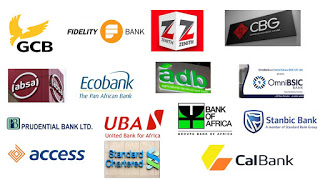Banks prepare to slash interest rates for Customers
- Advertisement -
In the next couple of months, universal banks operating in the country are expected to slash their respective interest rates for their customers in the wake of the Monetary Policy Committee, (MPC) of Bank of Ghana, (BoG) decision to slash the policy rate by 1percent to 13.5 percent from 14.5 percent.
According to the governor of the BoG, Dr Ernest Addison, risks to inflation outlook appear muted in the near-term, but pressures from mostly rents and transport fares, would require some monitoring to anchor inflation expectations.
- Advertisement -
Headline inflation eased sharply to within the medium-term target band, driven mainly by lower food prices and base drift effects, a tight monetary policy stance and stable exchange rate conditions.
- Advertisement -
Since the initial shock to inflation in April 2020, the forecast showed that inflation will be close to the central target by June 2021. These forecasts remain broadly unchanged and inflation would remain within the target band in the next quarter.
This means that the hike in petroleum products and the subsequent increase in the transport fares would not have any significant effect on the non food inflation of the Consumer Price Index (CPI) basket.
Read More: TUDEC donates 15 Wheelchairs to PWDs in Two Assemblies in Accra
The recent price developments show that headline inflation dropped sharply from 10.3 percent in March 2021 to 8.5 percent in April, almost back to pre-pandemic levels and within the medium-term target band of 8±2 percent.
- Advertisement -
The decline in the April inflation was driven by lower food prices and base drift effects. Food inflation dipped markedly to 6.5 percent in April from 8.8 percent in March, while Non-food inflation rose to 10.2 percent from 10.0 percent over the same comparative periods, on account of increases in ex-pump prices, and housing prices.
Similar to the trends in headline inflation, underlying inflation pressures eased substantially in April 2021. The Bank’s core inflation measure, which excludes energy and utility, declined to 8.6 percent in April, from 10.9 percent in March 2021.
However, inflation expectations gauged from a survey of businesses, consumers and financial sector inched up in April, reflecting in part, sentiments surrounding tax adjustments and recent challenges associated with maintenance works in the power sector Interest rates on government securities trended downwards across the maturity curve.
The 91-day and 182-day Treasury bill rates declined to 12.8 percent and 13.6 percent respectively in April 2021, compared with 14.1 percent and 14.3 percent respectively, in April 2020.
Similarly, the rate on the 364-day Government instrument declined marginally to 16.5 percent from 16.7 percent over the same comparative period. Broadly, the yield on all the medium- to long-term Government debt instruments declined over the review period, relative to the same period last year.
The weighted average interbank rate declined to 13.6 percent from 14.0 percent, largely reflecting improved liquidity conditions on the interbank market. This translated into a marginal decline in average lending rates of banks to 20.9 percent in April 2021, compared to 22.4 percent recorded in the same period of 2020.
By Elorm Desewu
- Advertisement -



